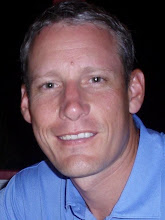Today I want to highlight one of the recent product enhancements by our partner, Hitachi Data Systems (HDS).
The update centers around Hitachi's Unified Storage 100 platform. When HDS first introduced the HUS100 offerings, they consisted of three products. The entry-level HUS110, mid-level HUS130, and the mini-enterprise HUS150.
In December 2012, HDS modified the physical specifications of the HUS130 controllers. The major change was upgrading the cache from 16GB to 32GB by replacing the 4GB dimms with 8GB dimms. This shrinks the performance gap between the HUS150 and HUS130 to almost nothing.
The HUS130 is still limited to half the backend SAS links than the HUS150 (16 to the HUS150's 32.) So unless the growth requirements for your array exceed 756TB of NearLine SAS, 216TB of SAS, or 96TB of SSD (capacities are raw) then the HUS130 gives you all of the performance and features of the HUS150 at a smaller price point.
Another major enhancement is to the code on the HUS platform controllers. The FC Queue Depth has been doubled from 512 to 1024. A customer can have all of the cache and SSD's in the world, but if the command queue is unable to handle the number of commands, the performance will be limited.
The code update also has introduced the Memory Management Layer. HDS mid-range arrays in the past used to reserve cache memory for all software installed regardless if it was in use or not, i.e. snapshots, thus having a negative impact on performance due to a lesser availability of cache.
The HUS Memory Management Layer allows for limiting the system area to applications actually in use leaving an overwhelming percentage of cache available where it is needed most. User data.
These updates all culminate in one thing.
Customers are able to maximize application performance at a price point previously unavailable in the mid-range array market.
And that is a pretty compelling story.




